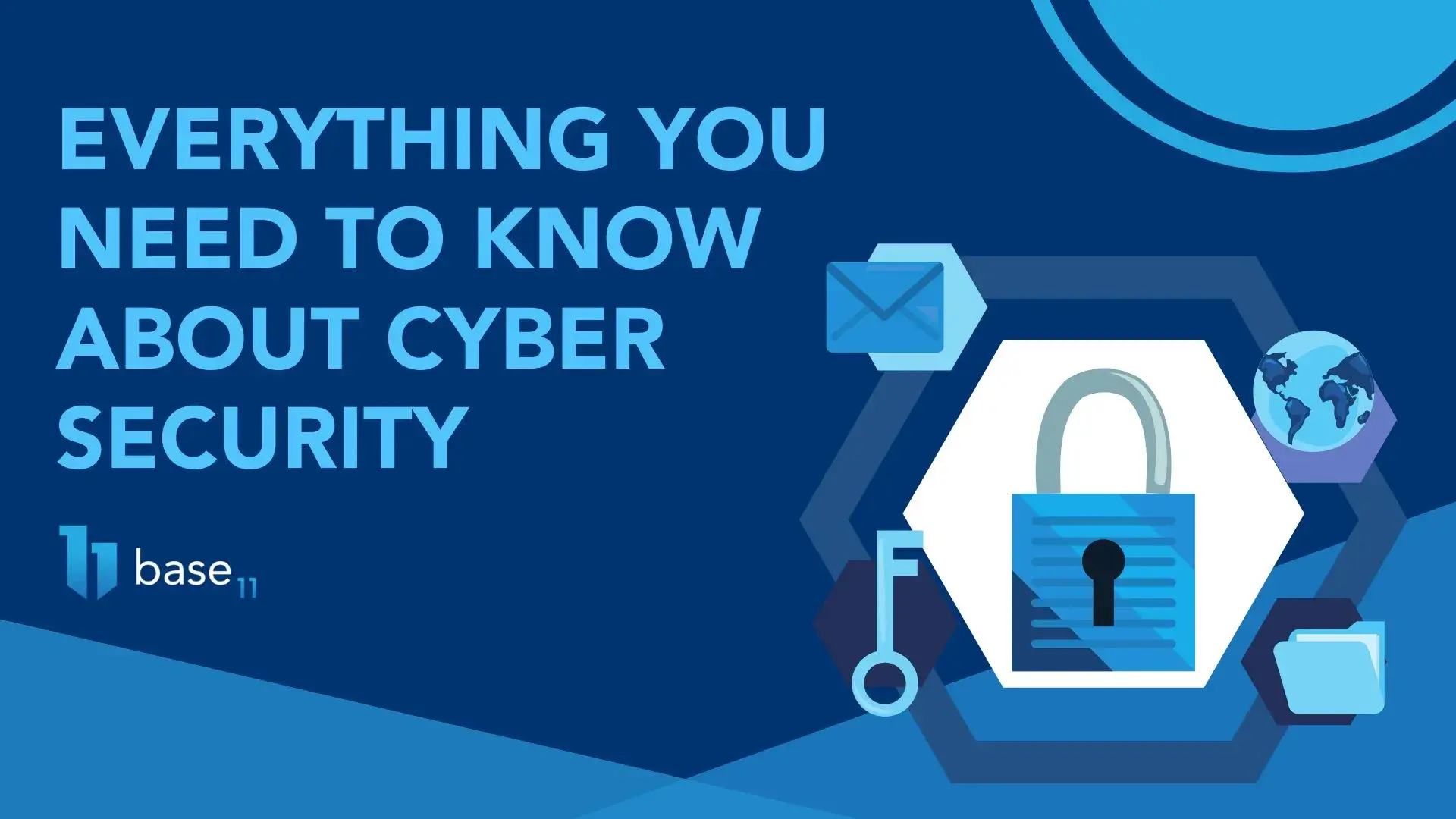
Ready for a super obvious thought? The internet is incredibly powerful. It has transformed our ability to connect with one another, build relationships, and do business. But these streamlined networks of communication also leave us vulnerable. The internet brings incredible opportunities—but it also creates undeniable security risks.
Cybersecurity is our way of maintaining safety online, protecting user data, and ensuring that private data remains secure. It protects important information from individual users, big businesses, and everyone in between, securing troves of personal and financial information from theft and tampering. Beyond installing antivirus and anti-spyware software, the field of cybersecurity encompasses many disciplines and sets standards that preserve the safety and strength of networks and digital information systems. Read on to learn more!
A Brief History
The field of cybersecurity is as old as computers themselves. It has always been rooted in protecting the information that is on computers and shared across networks.
Cybercrime developed right alongside the internet; as opportunities for innovative communication and information sharing grew, so did opportunities for the use of those networks for wrongdoing. In 1970, ARPANET (Advanced Research Projects Agency Network) researchers first created the connectivity network program that eliminated malware that traveled between computers independently using a network—launching the field of cybersecurity as we know it today.
Fast-forward to 1990 when more and more of the world gained access to the internet, providing a new playground for digital attacks. Commercial antivirus programs arrived on the scene, and cyber attacks were already posing a threat to large businesses like AT&T and National CSS.
From there, as computers became more prevalent in homes and businesses, the threats became larger, more creative, and harder to detect. Viruses arose and posed a unique threat—simply visiting a website could infect your computer—and credit card hacking started to define the 2000s and 2010s cybercrime landscape. Some high-profile cybercrime and hacking cases you may have heard of in the past 12 years involved companies like:
- Sony PlayStation Network in 2011, where hackers stole the personal data of 77 million accounts.
- Adobe in 2013, where 3 million user credit card numbers were hacked, affecting 38 million total users.
- The list goes on. Target (40 million users), Home Depot (56 million users), Yahoo! (500 million), Experian (15 million), Equifax (150 million), Uber (57 million), and more all have vast numbers of users’ personal information compromised in various cyber attacks between 2010 – 2020.
There are also a few historical moments in the 2010s that shaped our public conversation and perception of cybercrime and policy:
- In 2013, Edward Snowden leaked highly classified NSA documents, many of which are still being released. This case, in particular, sparked much public conversation about the ethics and safety of cloud technology.
- In 2016, the EU adopted the General Data Protection Regulation (GDPR), establishing some of the strongest policies and regulations that exist for the gathering and use of personal data by international businesses and prioritizing individuals’ rights over their personal data.
- In 2018, the California Consumer Privacy Act (CCPA) is signed into law as a response to the changing landscape of cyber threats, protecting consumer privacy rights and business obligations with respect to the collection and sale of personal information stateside.
The Stakes
The cybersecurity sector has grown in response to this history and must continue to anticipate many unknown factors that will come to shape the field in the future.
We can see from the numbers of people affected by various data breaches that the consequences of poor network protection are huge, and they threaten not only individual security, but business infrastructure as well. According to Statista, the size of the worldwide cybersecurity market is expected to increase by $345.4 billion by 2026. Phishing, online data theft, ransomware attacks, and identity fraud can threaten any organization, and security against these sorts of attacks is crucial now more than ever. The use of these techniques is expected to rise as our digital lives and the digital economy both grow and require more of our personal data for seamless transitions.
The Skills Gap and Cybersecurity in Practice
As demand for cybersecurity expertise grows, it’s clear that there is currently a huge skills gap. Many critical roles are going unfilled due to the rapidly growing sector and a shortage of talent (3.4 million cybersecurity experts short, to be exact).
The expertise required is not purely technical; there is a need for all sorts of work within this field. Proper training of all types can be done on the job, and with high demand, we look forward to a future where there are many direct and accessible pathways to cybersecurity work for students and professionals with all types of education and expertise.
If you’re someone interested in working in cybersecurity, here’s what you should know and what you can start exploring!
- Networking and System Administration: It’s important to have a good understanding of the technical aspects of data transmission and security
- Knowledge of Operating Systems (like Windows, Linux, Mac OS) and Virtual Machines: The Linux open-source operating system is an industry favorite!
- Network Security: Know the ins and outs of firewalls, antivirus software, network analytics, VPNs, and other measures to protect the integrity of network security.
- Coding: Having a diverse knowledge of coding languages is important. You can explore C and C++, Python, JavaScript, PHP, HTML, Golang, etc.
- Cloud Security: Your security skills applicable to public and hybrid platforms like AWS, Azure, and Google Cloud Platform will be super important, especially as more and more businesses turn to cloud infrastructure.
- Blockchain Security: Blockchain provides sophisticated, complex security, so it’s increasingly popular and a must for cybersecurity professionals to know how it works.
- The Internet of Things (IoT): In just two years, Statista estimates there will be 30 billion IoT devices connected worldwide. This invites innovation, but also cybersecurity vulnerabilities. IoT security is a huge frontier in the future of cybersecurity and should be a skills priority for those interested in the industry. Additionally, many IoT sensor devices, like your smartphone, your smart TV, and even your workout machines, collect personal data and connect automatically across networks, which only emphasizes the importance of securing these networks.
- Artificial Intelligence (AI): This rapidly growing sector pairs well with cybersecurity. AI would be able to provide automated and consistent analysis of activity across networks that may need to be addressed, recognize patterns, provide suggested solutions based on past results and emerging threats, etc.
- Soft Skills: Customer service, communication, active listening, presentation skills, management skills, problem-solving, persuasion, creativity, and research—these are all important for any role in cybersecurity. The industry touches so many others—and it’s still growing! To stay ahead of the risks, you must be able to innovate, stay creative, and advocate for your ideas.
Once you build these skills, you’ll be ready to pursue a position like Security Officer, Security Engineer, Security Administrator, Information Security Analyst, Intelligence Analyst, Cybersecurity Lawyer, Security Architect, Cybersecurity Sales, and more. Take a sneak peek into important details across these roles from people doing the work!
Here at Base 11, we help students build a springboard toward their dreams. Cybersecurity presents an amazing challenge and endless horizons to those who are drawn toward it. We hope this primer on cybersecurity peaks your interest and inspires you to go explore!
